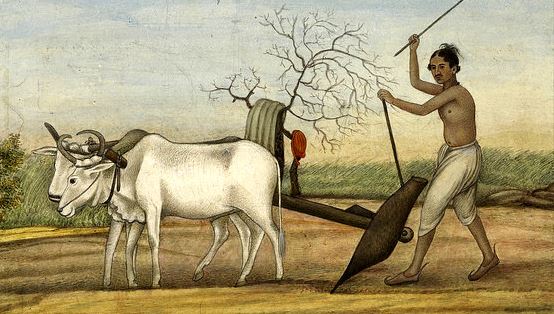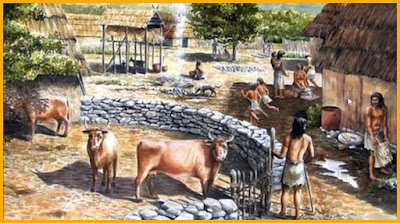The Allegory of the 'Mark of the Beast': Animal Oppression & Money-Based Systems
The Book of Revelation has captivated readers for centuries with its enigmatic and symbolic language about the end times. One of the most intriguing aspects of Revelation is the concept of the mark of the beast, which has been widely debated and interpreted in various ways. This essay will explore the contention that the mark of the beast, as described in Revelation, is a thinly veiled allegory about animal enslavement and money-based socio-economic systems. To support this assertion, we will draw from David Nibert's book "Animal Oppression and Human Violence," highlighting the role of land ownership and the development of money-based systems in perpetuating exploitation.
The 'Mark of the Beast' as Money-Based Socio-Economic Systems Land Ownership and Agricultural Revolution
The roots of human civilization can be traced back to the agricultural revolution, which led to a shift from nomadic hunting-gathering societies to settled communities. With the rise of agriculture, land ownership became crucial for the accumulation of wealth and power. The control of land enabled the elites to establish social hierarchies and control the labor of others, including animals.
In Nibert's work, he demonstrates how the appropriation of land for agricultural purposes necessitated the domestication and enslavement of animals for labor and food. This act of domination over animals mirrors the oppressive systems that are prevalent in money-based societies, where the quest for wealth and power leads to the exploitation of both human and non-human beings.
- Money as a Means of Control
As societies evolved, bartering and trading gave way to the use of money as a medium of exchange. While money itself may not be inherently evil, its implementation in socio-economic systems often perpetuates inequality and oppression. In money-based societies, those who control wealth and resources gain significant influence over the lives of others. This concentration of power leads to the exploitation of both animals and vulnerable human populations.
The mark of the beast, as a symbol of money, represents the corrupting influence of wealth and the subjugation of beings under this system. Inequities arise as those with the means to acquire wealth use it to exert control over others, including animals that are often treated as mere commodities in industrialized farming.
- Animal Oppression and Enslavement
In Revelation, the mark of the beast is said to be placed on the right hand or forehead of individuals, signifying their allegiance and subservience to the oppressive system. Similarly, animals in money-based societies are subjected to physical branding and ear tagging, marking them as property owned by humans. This branding becomes a visual representation of their enslavement, reducing them to mere objects in the pursuit of profit.
Nibert's book delves into the history of animal domestication and exploitation, revealing the parallels between the treatment of animals and the oppression of marginalized human groups under money-based systems. Both animals and marginalized humans are often viewed as disposable resources, exploited for the benefit of those in power.
Summary
The contention that the mark of the beast in Revelation is a thinly veiled allegory about animal enslavement and money-based socio-economic systems sheds light on the interconnection between oppressive forces in society. The historical development of money as a medium of exchange and the control of land has contributed to the widespread exploitation of animals and the marginalization of certain human groups.
Through David Nibert's analysis in "Animal Oppression and Human Violence," we can discern the insidious nature of systems that prioritize profit over the well-being of all beings. By recognizing the allegorical nature of the mark of the beast, we are encouraged to reevaluate our societal values and strive for a more compassionate and just world, where the enslavement of animals and the oppression of the vulnerable are no longer tolerated. Afterword
Analysis of "The Beast out of the Earth" (Revelation 13:11-17)
''Then I saw a second beast, coming out of the earth. It had two horns like a lamb, but it spoke like a dragon. 12 It exercised all the authority of the first beast on its behalf, and made the earth and its inhabitants worship the first beast, whose fatal wound had been healed. 13 And it performed great signs, even causing fire to come down from heaven to the earth in full view of the people. 14 Because of the signs it was given power to perform on behalf of the first beast, it deceived the inhabitants of the earth. It ordered them to set up an image in honor of the beast who was wounded by the sword and yet lived. 15 The second beast was given power to give breath to the image of the first beast, so that the image could speak and cause all who refused to worship the image to be killed. 16 It also forced all people, great and small, rich and poor, free and slave, to receive a mark on their right hands or on their foreheads, 17 so that they could not buy or sell unless they had the mark, which is the name of the beast or the number of its name.''
This passage from the Book of Revelation, specifically Revelation 13:11-17 describes the vision of the second beast, which comes out of the earth and exercises authority on behalf of the first beast. The second beast deceives people with great signs, and it compels them to worship the first beast and its image. Additionally, it forces everyone, regardless of social status, to receive a mark on their right hand or forehead, without which they cannot engage in economic activities.
Analyzing and relating this passage to the article's theme of animal oppression and money-based socio-economic systems, we can draw some connections:
1. Exploitation of Power: The second beast's role as an enabler of the first beast's authority reflects how power structures can facilitate and amplify oppressive systems. Similarly, in money-based socio-economic systems, the concentration of power in the hands of a few can enable and perpetuate exploitation.
2. Deception and Control: The second beast's use of signs and deception to compel worship and conformity symbolizes how those in power can manipulate and control people's actions and beliefs. Similarly, in money-driven societies, manipulation through advertising, media, and economic coercion can influence behaviors and choices.
3. The Mark of the Beast: The forced marking on the right hand or forehead is reminiscent of the mark of the beast mentioned in the article. While the exact meaning of the mark is subject to interpretation, in the context of the article, it represents a symbol of allegiance to exploitative systems, restricting people from participating in economic activities if they do not conform.
4. All-Inclusive Control: The passage emphasizes that the second beast's control extends to people of all social strata, highlighting how oppressive systems can affect everyone, regardless of their status. Similarly, in money-based societies, economic exploitation can impact individuals from all walks of life.
Overall, the passage from Revelation shares some thematic elements with the article's exploration of animal oppression and money-based socio-economic systems. Both texts delve into the dynamics of oppressive power structures and the manipulative tactics used to maintain control. The imagery of deception, coercion, and the restriction of economic participation resonates with the article's examination of how exploitative systems operate. While the context of Revelation is highly symbolic and apocalyptic, it offers insights into the universality of struggles against oppressive forces, which the article also aims to address in the context of animal exploitation and resourceism.
Resources
Book: "Animal Oppression and Human Violence: Domesecration, Capitalism, and Global Conflict" by David A. Nibert - This is the primary work by David Nibert that is mentioned in the essay. It delves into the connections between animal exploitation, capitalism, and global conflicts, exploring the historical and sociological aspects of these issues.
Book: "Revelation: A Shorter Commentary" by G. K. Beale - This book provides an in-depth commentary on the Book of Revelation, including discussions on various interpretations of the mark of the beast and other symbolic elements in the text.
Academic Journals: Scholars in the fields of religious studies, sociology, and ethics have explored the themes of animal oppression and religious symbolism in various articles and journals. You can search for academic papers that examine the topic of animal exploitation in religious contexts, including the Book of Revelation.
Documentary: "Cowspiracy: The Sustainability Secret" - This documentary explores the environmental impact of animal agriculture and its connection to global issues like deforestation, climate change, and resource depletion. It highlights the environmental consequences of large-scale animal exploitation, which aligns with Nibert's arguments.
Websites and Online Articles: Look for reputable websites and articles that discuss the history of animal exploitation, capitalism, and their impact on human societies. These resources can provide valuable insights and support your understanding of the interconnected issues.
Historical Studies: Explore historical texts and studies that delve into the impact of land ownership, capitalism, and militarization on the course of human history. This can provide context for the interconnectedness of animal exploitation and societal structures.


